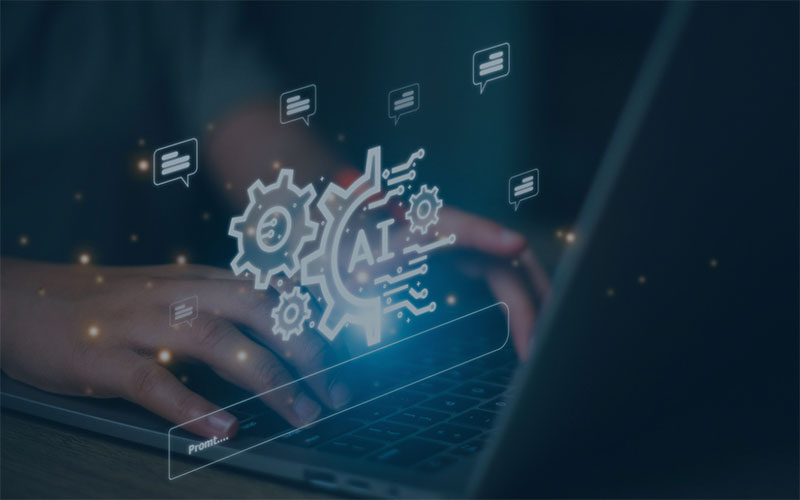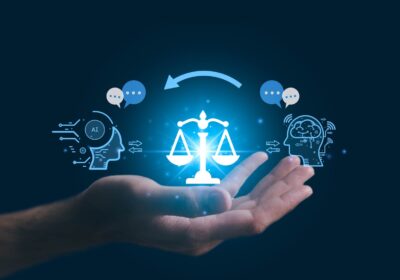The Next Frontier: AI to Revolutionize Employee Benefits

February 14, 2024
SEB Marketing Team
As more companies embrace the use of Artificial Intelligence (AI), it’s time to consider how AI can impact the employee benefits experience. AI is quickly becoming an influential factor not only in the way systems and processes are run, but also in how services are being offered to enhance communications, streamline benefits enrollment processes, real-time reporting, and much more. This is especially helpful for HR professionals that are tasked with the challenge of ensuring that employees are educated about, are enrolled in, and select the benefits that best suit the employee’s needs. Let’s delve deeper into the transformative impact AI can have on the benefits experience for employees and plan sponsors.
Employee Experience and Engagement: AI can tremendously impact the user experience with predictive decision-making tools to help employees with benefits selection especially when there are multiple benefits plan options. Employees can feel overwhelmed making benefits choices. AI algorithms can instantly process many points of data including an employee’s past choices and financial situation and make benefit recommendations that best suit the employee. These personalized recommendations ensure that your workforce is getting the most out of the benefits available.
Additionally, HR Leaders can be bombarded with a high volume of questions, often complex, about benefits coverage. AI-powered chatbots, conversational tools that can perform routine tasks, can be trained on company specific benefits to provide personalized support and guidance round-the-clock to answer employee queries promptly and accurately. This reduces the burden for HR and improves the employee experience with quicker response times and by conveying a better understanding of the benefits offerings.
Enrollment Uptake: The enrollment process can be very demanding on HR, in that they need to ensure that employees receive the right messages, at the right time and take action to enroll. However, every employee has individual communication needs and HR resources can be strained to communicate complex information and reach employees effectively. AI technologies can provide tailored messages at the frequency needed to encourage employees to enroll on time, ensuring the uptake and engagement that HR leaders are looking to achieve.
Real-Time Reporting: Perhaps one of the most enticing aspects of AI is its ability to sift through large volumes of data within seconds to produce valuable analytics that could help plan sponsors make better plan design choices. AI can empower decision-makers with actionable insights into employee preferences, utilization patterns, and emerging trends. By harnessing AI’s predictive analytics capabilities, companies can anticipate future needs, optimize benefits offerings, and have valuable insights into employee health, wellness, and engagement which can help them ensure long-term sustainability.
Personalized Benefits Offerings: AI can be utilized to personalize benefits offerings based on individual employee needs, preferences, and life stages. Through AI-driven algorithms, companies can potentially tailor benefits packages, recommend relevant options, and adapt offerings in real-time, ensuring maximum value and relevance for employees.
Compliance and Risk Management: AI’s advanced capabilities in data analysis and pattern recognition can strengthen compliance and risk management efforts by flagging discrepancies or anomalies. AI can be used to support and enhance security and integrity across benefit programs, mitigating potential risks and liabilities for businesses.
The integration of AI in the benefits process represents a great opportunity to enhance employee experience and engagement, provide well needed real-time analytics and produce insights that can be used to personalize benefits appealing to multiple generations. As AI continues to evolve, there will be many more applications to look out for that could prove to be useful to business in the future.
Post navigation
Related Posts

3 Keys to Sustainable Excellence of High-Performance Teams
You spent a considerable amount of capital and time hiring the best engineers, the most…

Your 5-Point Generative AI Policy Checklist for HR and Tech Leaders.
C'est officiel : l'Intelligence Artificielle générative (IAg) n'est plus un concept futuriste—c'est un super copilote…

The Psychological Safety Re-Check: Why Even Top Teams Need a Periodic Vulnerability Audit
You’ve built a rockstar team. They hit their numbers and they crush their goals. Congratulations!…
